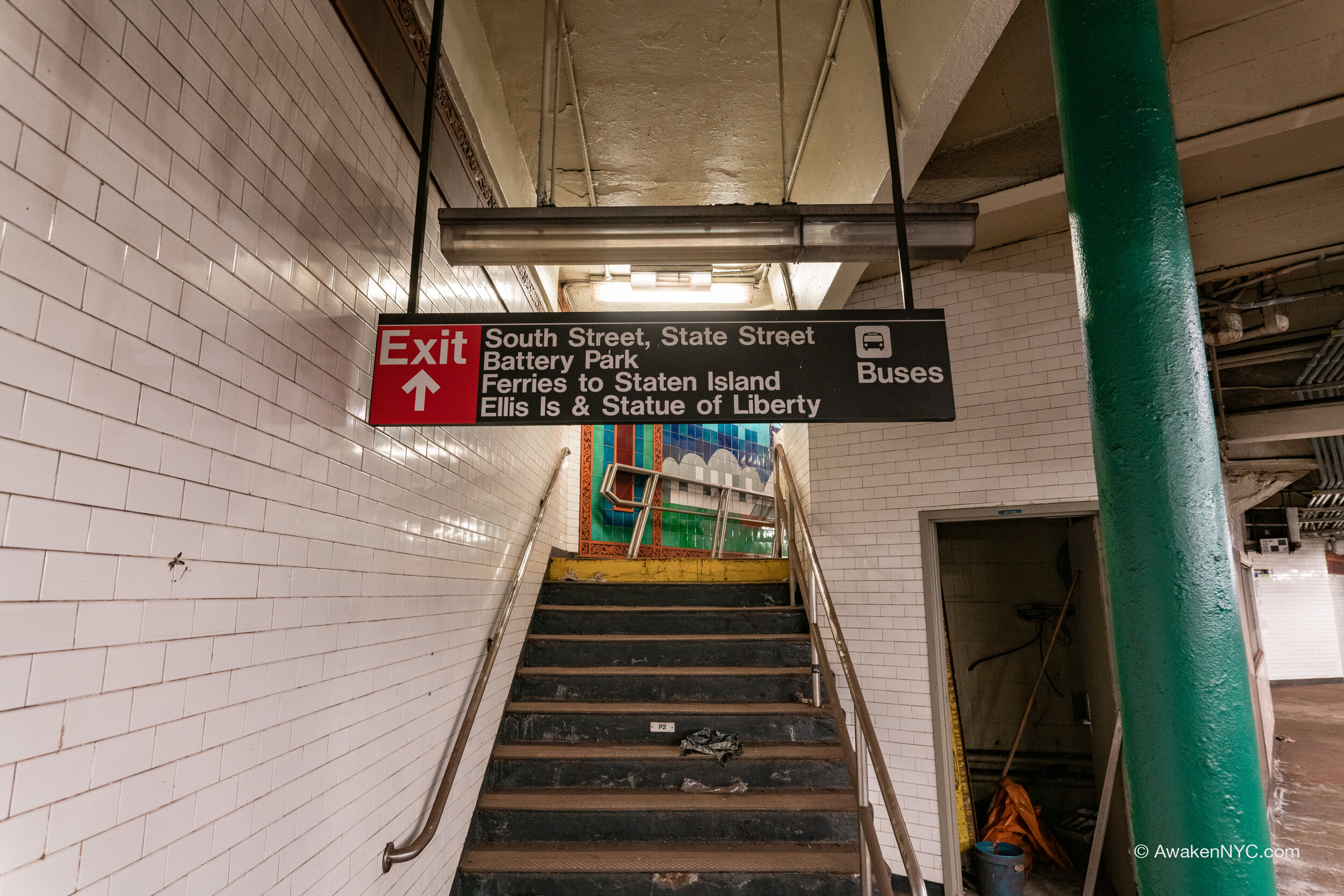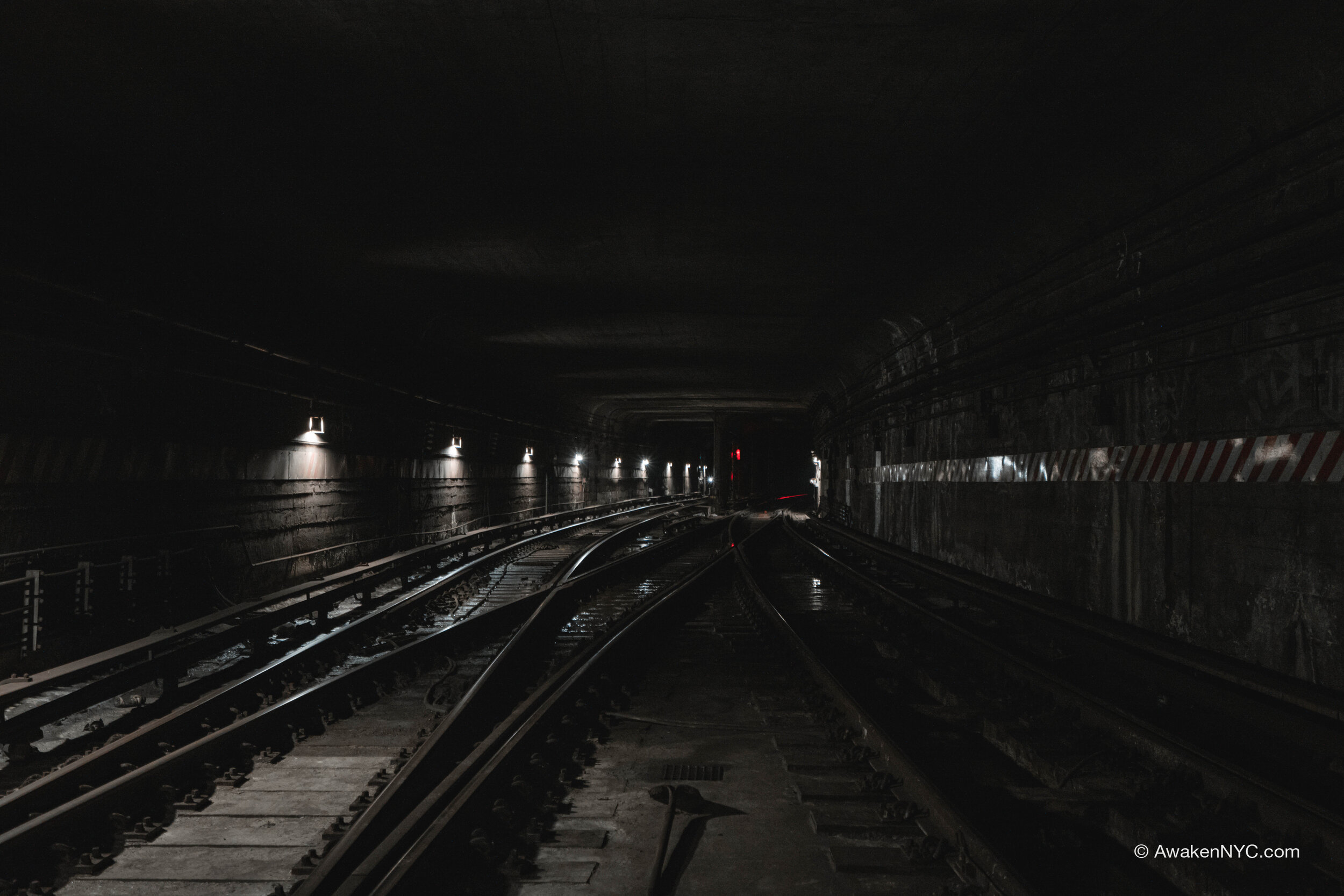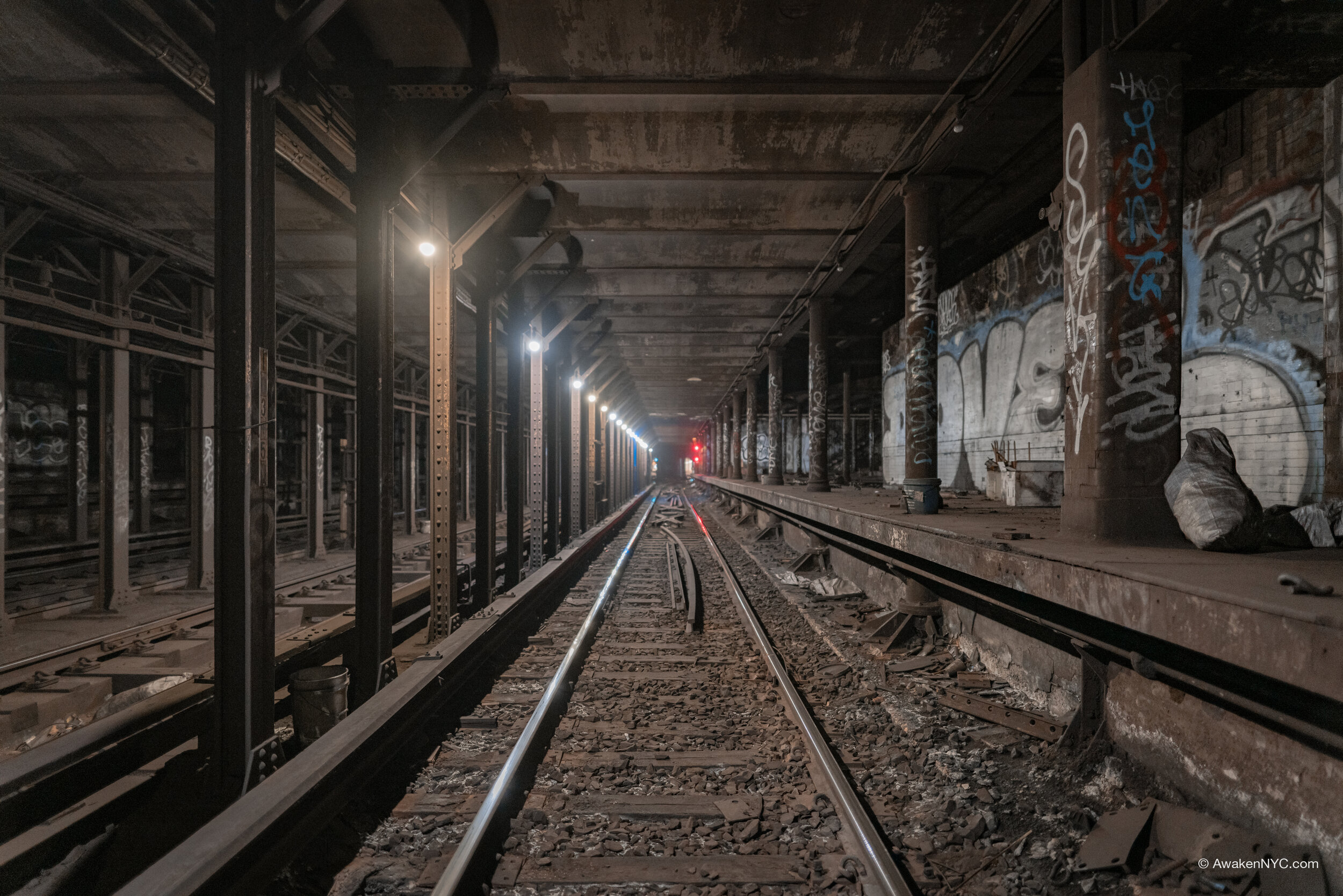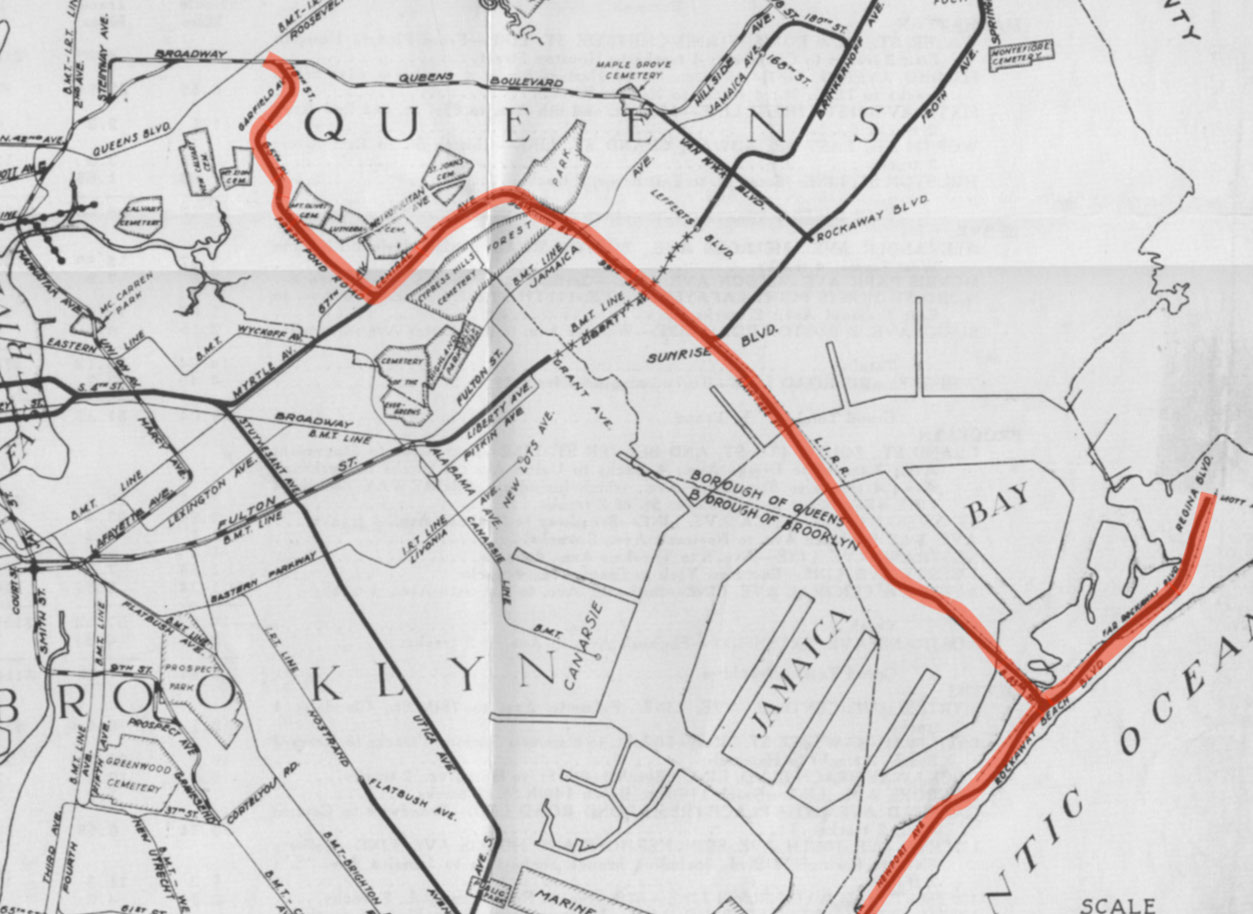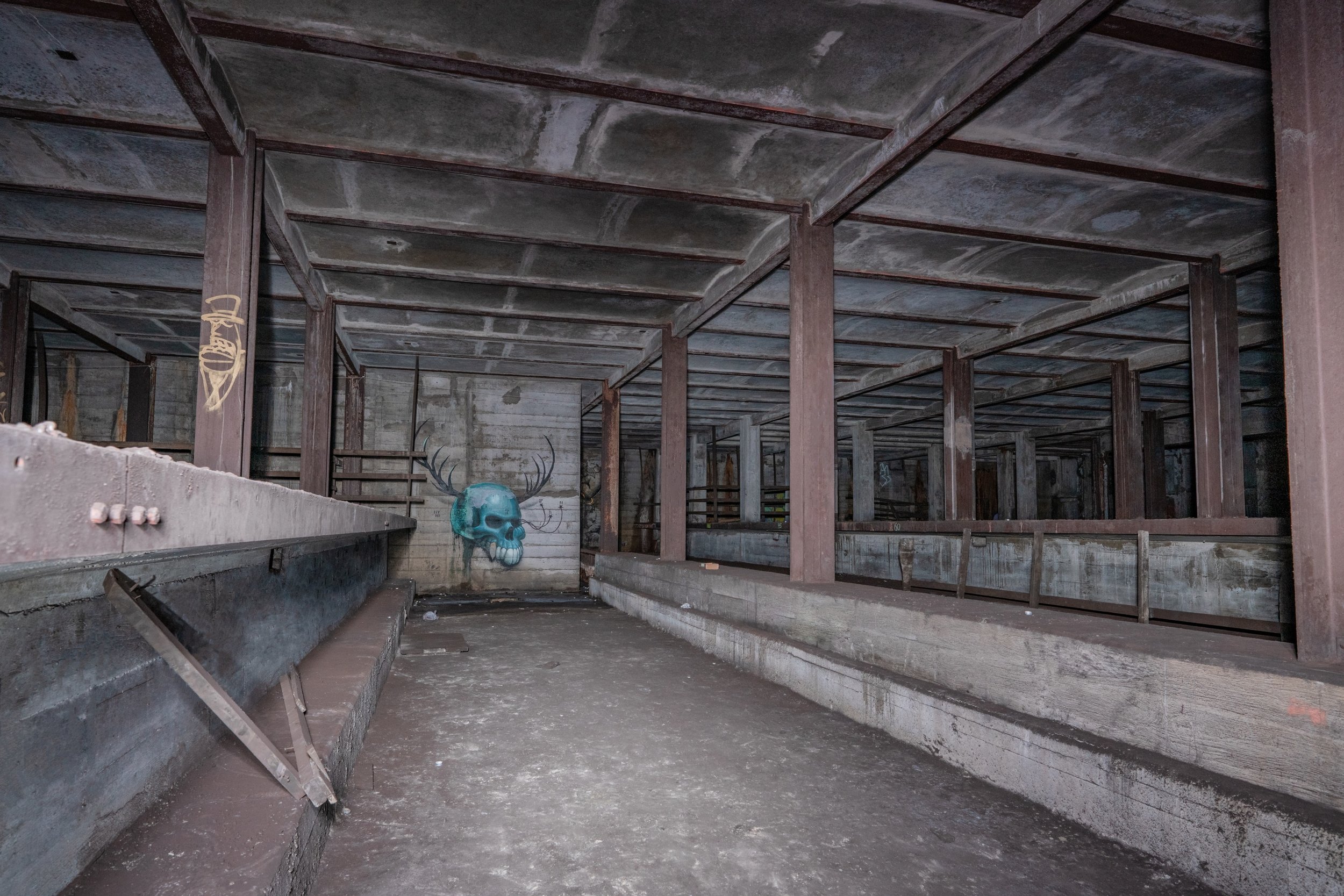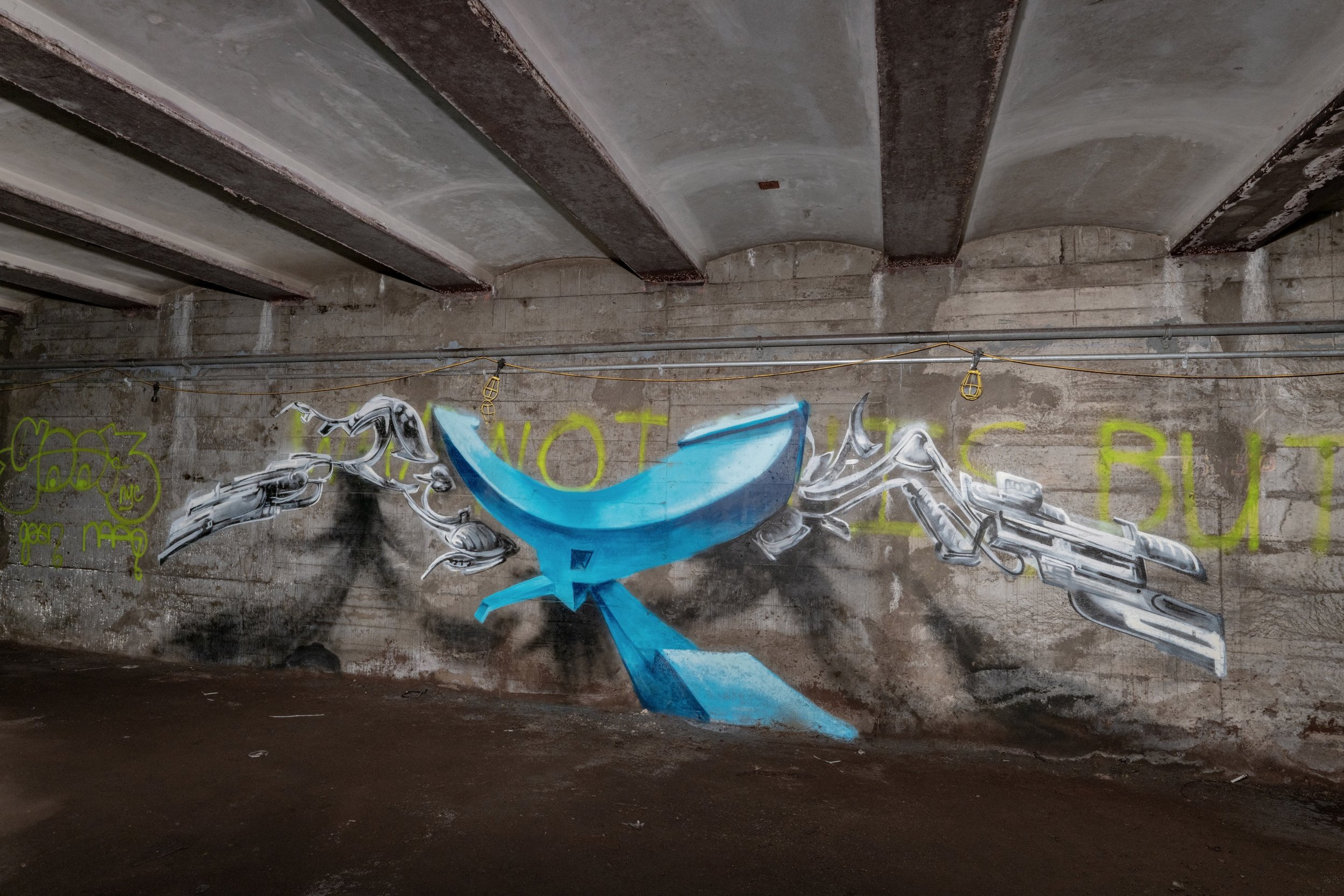So far, I’ve covered abandoned stations from the original 1904 IRT subway line. Soon after the 1904 opening of the IRT, large expansions were made to the system. The South Ferry loop station opened in 1905, constructed as a part of Contract 2. (Contract 2 extended the IRT south from City Hall, through the new Joralemon St Tunnel under the East River, and to the Atlantic Terminal at Atlantic Ave/Flatbush Ave in Brooklyn. The C2 construction was completed in 1908.) At that time, the loop tracks were connected only to the IRT Lexington Ave line at Bowling Green, and only the outer loop platform had been constructed. Southbound trains not headed to Brooklyn could instead turn back north here. The outer loop platform was built at 5-car length, like most other original IRT local stations. However, like the City Hall loop, it was never extended to full length due to the impracticability of doing so.
Since the opening of the Atlantic Terminal in 1908, many trains were regularly sent to the Bowling Green loop instead of continuing to Brooklyn, despite high demand in Brooklyn. In response, a third track was built at Bowling Green, along with a 2-car-length platform, and the inner loop platform at South Ferry was constructed. When the Dual Contracts expansion of the IRT system was opened in 1918, the new platforms were placed into service for the Bowling Green shuttle.
Additionally, as part of the dual contracts construction, the IRT 7th Ave line—which would extend south to South Ferry—was built starting in 1914 and completed in 1918. This created the connection that the (1) train currently utilizes. Trains from 7th Ave would always utilize the outer loop track and platform, while the Bowling Green shuttle and trains from Lex used the inner loop track.
The Bowling Green station was long plagued by overcrowding, and in 1972, the MTA rehabilitated the station and built a new side platform for the northbound track to address the problem. It was at this time that the ‘70s style orange tiles were installed. All of the MTA stations built and rehabilitated during this time received a “fresh” treatment with these ugly-but-intriguing tiles.
As the fiscal crisis hit the city during this time, Bowling Green shuttle service was cut to help reduce the MTA’s operating deficit (despite the fact that the platform had just received the same fresh tile treatment), and the Bowling Green shuttle and South Ferry inner loop platforms were abandoned.
After 9/11, the city received recovery funds from the federal government for rebuilding destroyed subway lines, and some of this was dedicated towards a new South Ferry station project. The project ended up costing $530 million, and included building an entirely new South Ferry station complex. The project would increase the hourly train capacity of the (1) line, as well as make the platforms full 10 car length and give the MTA’s 21st century station look to South Ferry.
With the completion of construction of the new South Ferry, the South Ferry loop was officially abandoned in 2009. However, a few short years later in 2012, Hurricane Sandy hit the city. Storm surge flooding caused the entire new South Ferry station complex to flood, along with most of the under-river tunnels. South Ferry was damaged so severely that the new station was completely shut down, and (1) service terminated at Rector St for around 8 months. During this time, the old South Ferry loop station was rehabilitated and opened for full time service again, as it was not damaged nearly as badly as the new station.
The old South Ferry loop stayed in service for a few more years while the new station complex was reconstructed and rehabilitated. The loop station was officially abandoned again in 2017, with the second opening of the new South Ferry station.
Today, the old loop station has collected quite a bit of dust, but remains lit and looking very much the same as when it was first closed. I personally love the architecture of this station, and it’s a shame they couldn’t have replicated some of the artwork from the old station in the new station. It’s always nice to visit this place.









